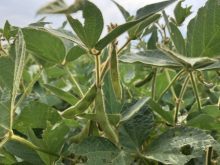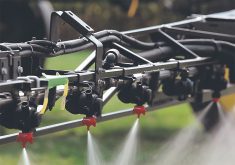DRESDEN, Ont. – The high regard organic farmers hold for soil biological activity is well founded, but it’s not going to reduce the bank of weed seeds.
That’s a key finding in a study published in the March-April edition of Weed Science.
John Teasdale, a physiologist with the U.S. Department of Agriculture, said smooth pigweed and lambsquarter weed seeds were evaluated in organic and conventional plots over two years. While the biological activity and organic matter levels in the long-term organic plots were greater, they had little if any impact on weed seed viability.
Read Also

No special crop fireworks expected
farmers should not expect fireworks in the special crops market due to ample supplies.
“I think there are two important pieces of information from this study. One is the supposed linkage between higher organic matter and the microbial populations and lower weed-seed persistence. This is something that people in the organic community have assumed and they’re probably wrong,” Teasdale said.
The other point may be a positive for the entire farming community.
The study showed that more than 80 percent of weed seeds were no longer viable after two years in the ground, regardless of the treatment. Teasdale suspects that number would have risen to more than 90 percent after three years.
This offers farmers who see heavy weed survival with a chance to greatly reduce the weed seed population if they’re able keep their fields clean for two or three years.
Herbicides and mechanical removal are options. So are rotations that include crops that tend to suppress weeds like winter wheat and hay.
Weeds, unfortunately, have strategies of their own.
A small percentage of weed seeds remain dormant and viable for years. The percentage of dormant weed seeds tends to increase if the parent plant was growing under stressful conditions.
Another ploy relates to weed seed placement in the soil.
Farmers would like weed seeds to germinate deep in the soil since they are unlikely to break through to the surface. Unfortunately, at deeper depths, weed seeds tend to remain dormant, a phenomenon likely related to oxygen availability, Teasdale said.
The experiment was conducted at the Rodale Institute in Pennsylvania and the Beltsville Agricultural Research Center in Maryland on medium-textured soils.
A mixture of soil and seeds were placed into mesh bags and buried either five or 15 centimetres deep in the fall after soybeans. Over the next two years they were temporarily removed and the seeds evaluated for their viability.
Teasdale said that while higher soil organic matter and biological activity cannot be linked to weed seed persistence, there are likely specific microbial biochemical activities that can. Discovering which soil functions are involved is the challenge.
Teasdale and four other researchers published the paper, Weed Seed Persistence and Microbial Abundance in Long-Term Organic and Conventional Cropping Systems.














